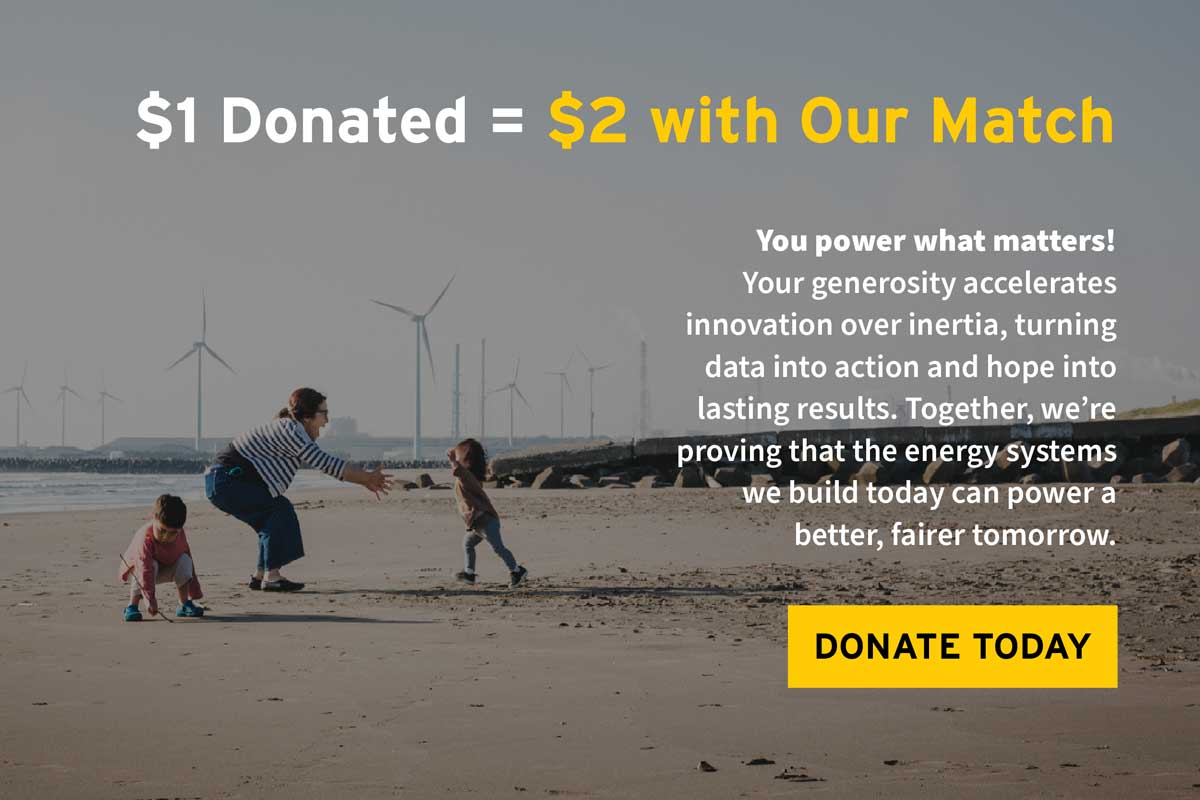
Climate: Where Technology, Infrastructure, and Policy Meet
A review of the new Bill Gates book “How to Avoid a Climate Disaster”
In his new book, How to Avoid a Climate Disaster, a man who has left his mark on software, business, and philanthropy sets his sights squarely on the world’s greatest crisis: climate change. In doing so, Bill Gates provides a credible and comprehensive overview of what must be done for a chance of avoiding the most catastrophic effects of what he describes as the greatest challenge humanity is facing—the same way we describe the challenge at RMI. As an author on this, he is both deeply passionate and very well-informed, and elevates the importance of the topic to a wider global audience in a very understandable book. It is a worthwhile read!
Like us at RMI, Gates is a technologist who recognizes the crucial differences between energy and IT, particularly with regard to how pathways differ for innovation and deployment of solutions in each sector. In one of my favorite quotes towards the beginning of the book, he writes: “Even I can recognize that you have to be a pretty big nerd to write a sentence like ‘I’m in awe of physical infrastructure.’” So are we!
At RMI we always talk about the complex nature of the energy system. This book accurately reflects how the energy transition is much more complex than only decarbonizing the power system and deploying electric vehicles. Gates provides a simple taxonomy of the entire energy system in an easily understandable table at the beginning of the third chapter. This taxonomy includes not just plugging electric devices into the power grid, but also making things, growing things, getting around, and keeping warm or cool.
Along with this taxonomy, Gates highlights the important distinction between where we are on track with answers, including the power grid and electric vehicles, and where fundamental innovation is still needed. The latter includes the harder-to-abate sectors like aviation, cement, shipping, and steel. He presents these areas where technologies are still needed in a simple table in chapter eleven of the book, listing such innovations as green hydrogen, long-duration storage, and zero-carbon cement as key areas to focus on for the more challenging sectors of the economy.
In addition to the challenges facing the supply side of the energy system, Gates references the importance of demand-side innovation, which has always been a core focus of our work at RMI. Starting nearly 40 years ago when Amory Lovins described the “Soft Path” to a clean energy future including efficiency as a key component, we at RMI have continued to recognize that using less energy to achieve the same results is critical.
A recent example of this focus is our work with the Global Cooling Prize, which has identified cooling technologies that are more than five times as efficient as existing air conditioning units. Given the importance of cooling technologies as global temperatures rise, this single innovation alone has the potential to avoid half a degree of warming by 2100. It just goes to show how we can come up with better technologies even in mature industries where innovation has slowed down.
With strong support from the government of India, the Global Cooling Prize is also an excellent example of the importance of public-private partnership and industrial policy to drive innovation in the energy industry. Gates describes how industrial policy is critical across sectors, from driving deployment of EV charging infrastructure to incentivizing innovation in harder-to-abate industrial processes. In fact, in his 60-minutes interview, he talks about this being a challenge of collaboration as well as innovation.
As he explains towards the beginning of chapter ten, “When it comes to massive undertakings—whether it’s building a national highway system, vaccinating the world’s children, or decarbonizing the global economy—we need the government to play a huge role in creating the right incentives and making sure the overall system will work for everyone.”
At RMI, we agree that industrial policy is essential for accelerating the clean energy transition, and we are encouraged to see the Biden Administration getting off to a strong start in leveraging the power of the US federal government to drive more rapid deployment of clean energy solutions. As we wrote when the administration was inaugurated, this is a tremendous opportunity. However, in order to ensure that the United States receives full benefit, we will need a robust climate-tech industrial policy.
Gates highlights several overarching guidelines and specific policy ideas that will help to accelerate the clean energy transition. We agree with many of the specific policy ideas, including: changing market rules so new technologies can compete, putting a price on carbon, and creating clean electricity, fuel, and product standards. Above all, the Biden Administration needs an “all-of-government” approach to address the climate crisis in every sector of the economy.
This new book from Bill Gates provides an important perspective on the magnitude of our challenge, and on what must be done to accelerate the clean energy transition to avoid the worst impacts of the climate crisis. It is easily understandable for a broad global audience, and with humility Gates questions whether his voice can make a difference. We believe it does! We need everyone involved in tackling this global crisis, from policy makers and business leaders to financial organizations and citizens around the world. As Greta Thunberg says, “everyone is needed, and everyone is welcome.”
